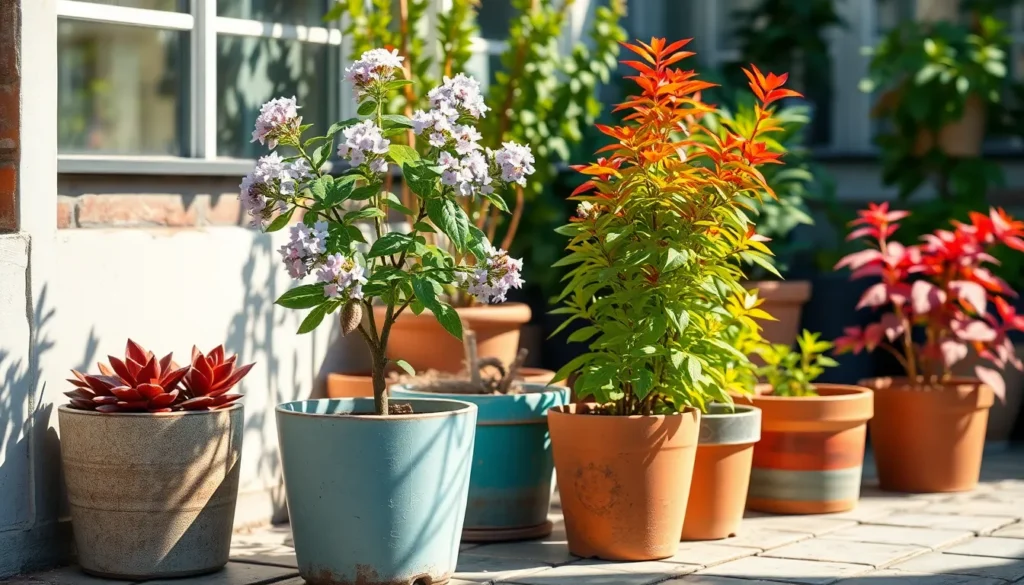Welcome to a world where even the coziest spaces can blossom into lush, vibrant sanctuaries, no matter your level of gardening expertise. Whether you’re just starting your green-thumb journey or are a seasoned gardener seeking new inspiration, “5 Creative Best Plants For Small Gardens” is your ticket to transforming compact spaces into flourishing havens of beauty and tranquility.
Imagine the joy and satisfaction of nurturing plants that not only thrive in limited spaces but also add a unique charm to your home. This guide is crafted to arm you with insights into selecting plants that bring maximum impact with minimal footprint, offering practical benefits like improved air quality, aesthetic appeal, and a sense of calm. Get ready to dive into a world where gardening success is within everyone’s reach, and let these creative plant choices inspire your small garden endeavors.
Dwarf Citrus Trees (Space-Saving Fruit Producers)
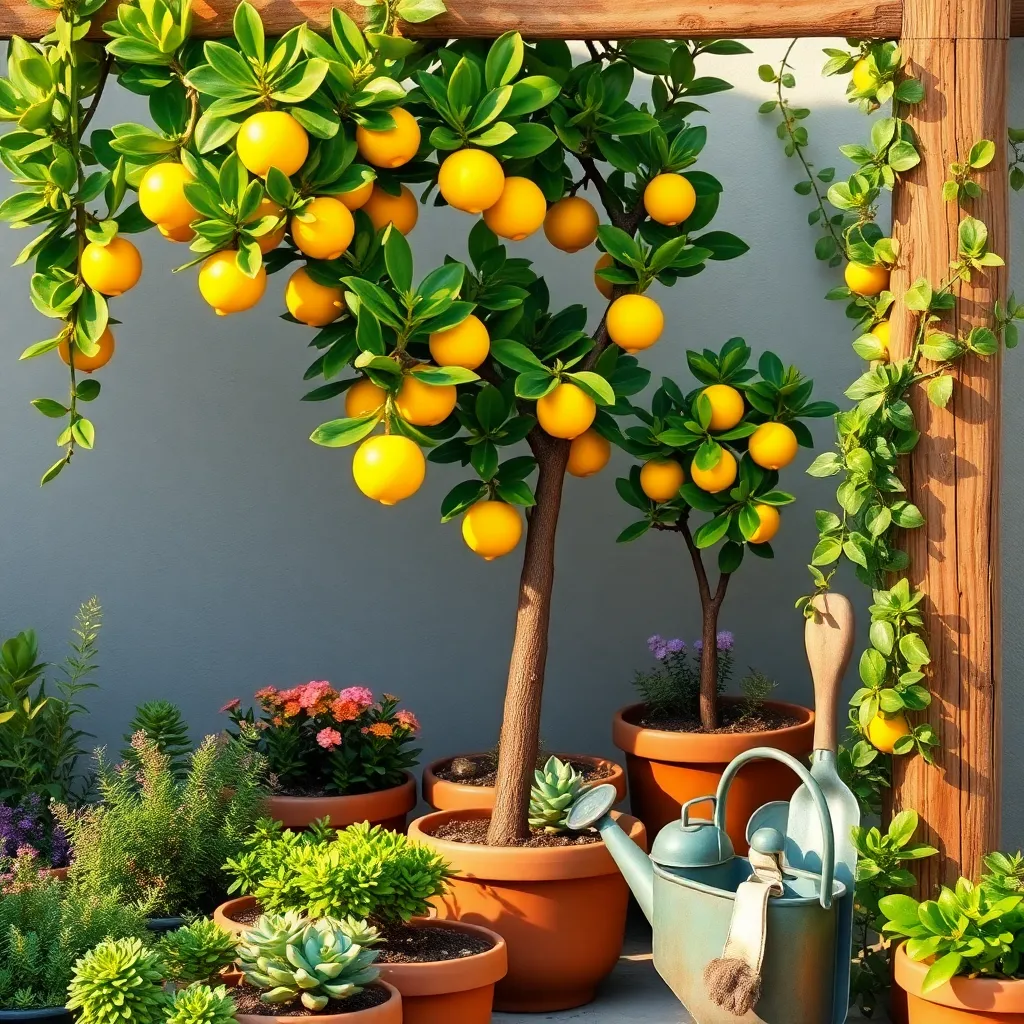
Dwarf citrus trees are an excellent choice for small gardens due to their compact size and abundant fruit production. They thrive in containers, making them perfect for patios or balconies where space is limited.
When selecting a container, ensure it has adequate drainage and is at least 18 inches in diameter to support healthy root growth. Use a high-quality potting mix specifically designed for citrus or other fruit trees to provide the necessary nutrients.
For optimal growth, place your dwarf citrus tree in a location that receives at least six to eight hours of sunlight daily. Water them deeply once a week, allowing the soil to dry out slightly between waterings to prevent root rot.
Fertilizing is crucial for these trees; apply a balanced citrus fertilizer every two months during the growing season. For those looking to elevate their gardening skills, consider practicing pruning techniques to shape the tree and encourage more fruit production.
Herb Spirals (Vertical Growing Solution)
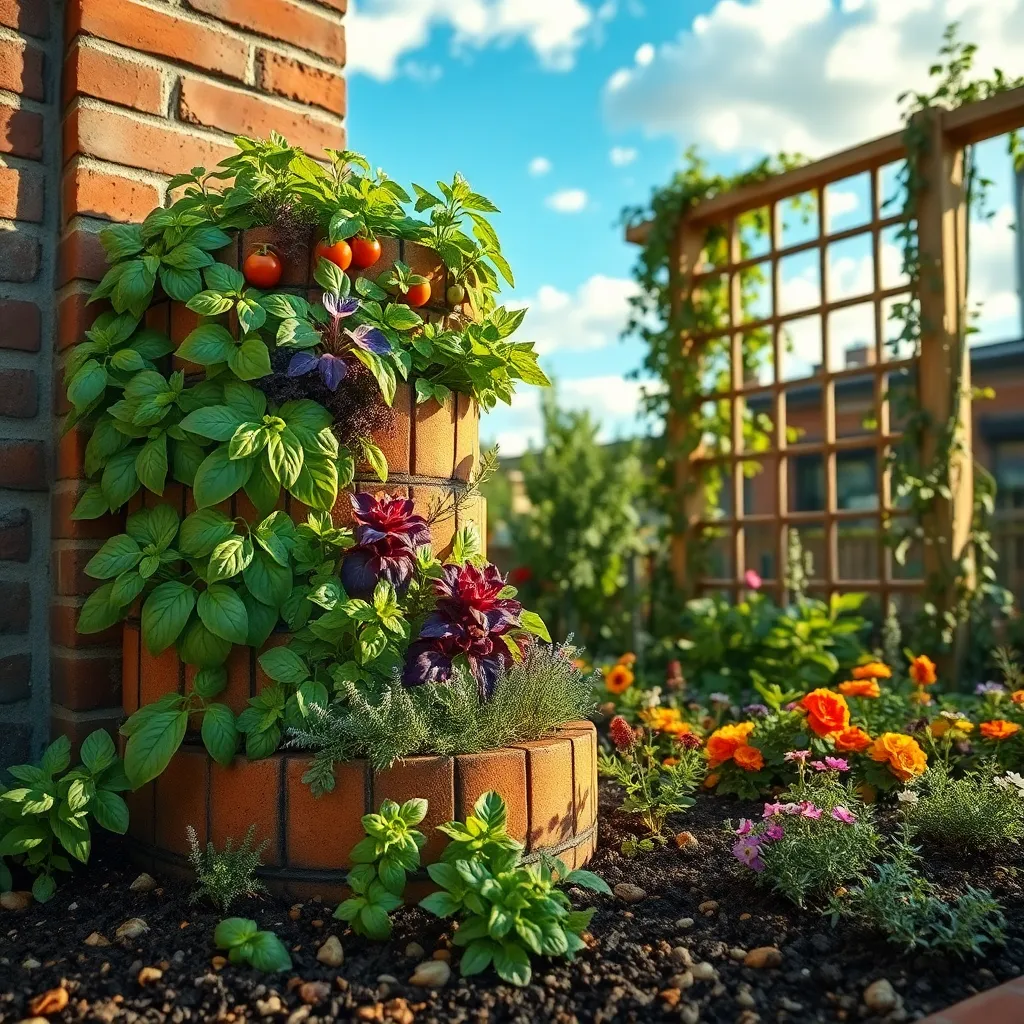
Herb spirals offer a practical and visually appealing way to maximize space in small gardens. This vertical growing solution allows you to cultivate a diverse range of herbs by leveraging different levels of sunlight and moisture throughout the spiral.
To build an herb spiral, start with a base of rocks or bricks arranged in a spiral shape, gradually increasing height toward the center. Fill the structure with a quality, well-draining soil mix, rich in organic matter, to ensure your herbs have the nutrients they need.
When planting, place drought-tolerant herbs like rosemary and thyme at the top, where they will receive the most sunlight and drainage. In contrast, water-loving herbs such as mint and basil thrive closer to the base, where moisture is more abundant.
Regular maintenance involves checking soil moisture levels and adjusting watering schedules accordingly. Consider using mulch to retain soil moisture and reduce weed growth, ensuring your herbs remain healthy and vibrant throughout the growing season.
Compact Perennials (Long-Lasting Color)
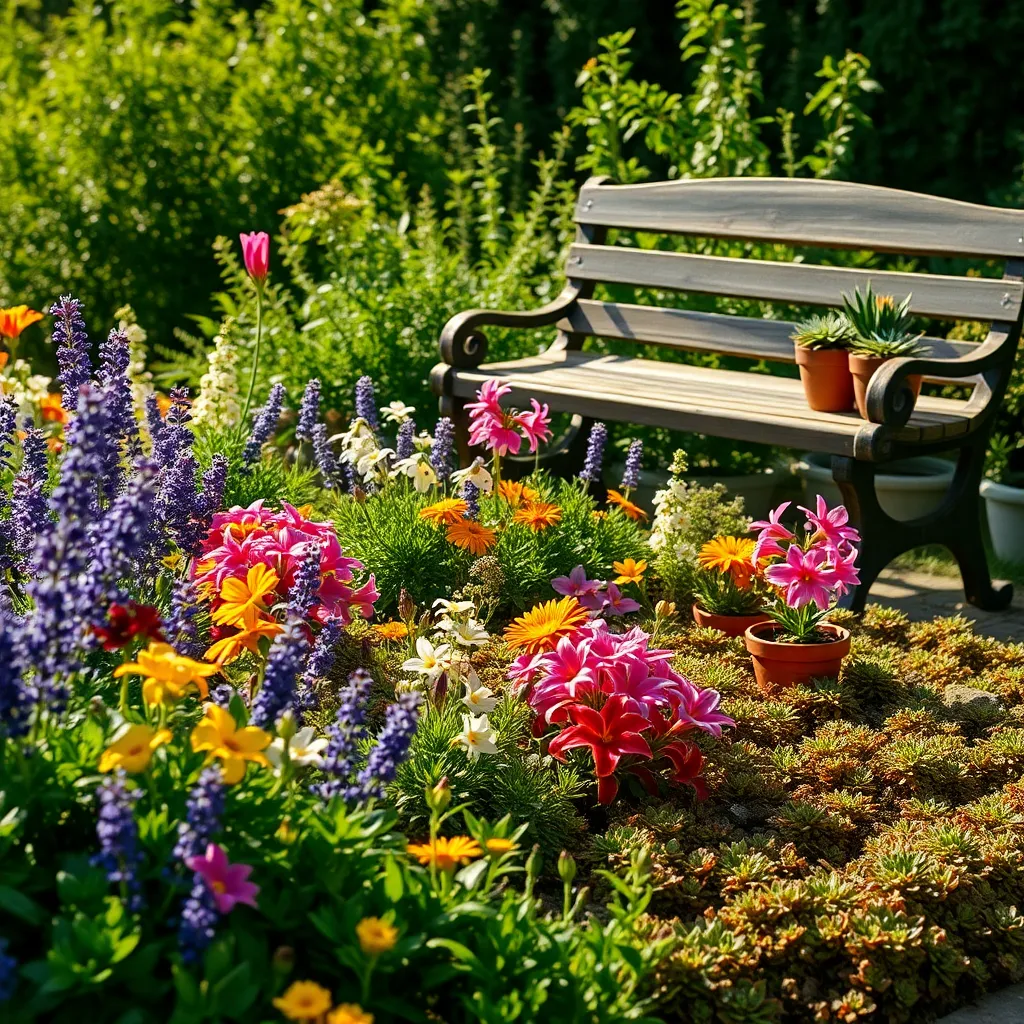
Compact perennials are perfect for small gardens, offering vibrant color year after year without overwhelming the space. These plants are typically low-maintenance, making them ideal for beginners and seasoned gardeners alike.
Consider planting varieties like Lavender, Coreopsis, and Salvia for a splash of long-lasting color. These perennials thrive in well-draining soil with plenty of sunlight, requiring minimal watering once established.
For those with a bit more experience, incorporating a few advanced techniques can enhance your compact perennials’ growth. Deadheading, or removing spent blooms, encourages more flowers and extends the blooming season.
Additionally, applying a layer of organic mulch around the base of your plants can help retain moisture and suppress weeds. This simple practice not only reduces maintenance but also improves soil health over time.
Succulent Arrangements (Low-Maintenance Displays)
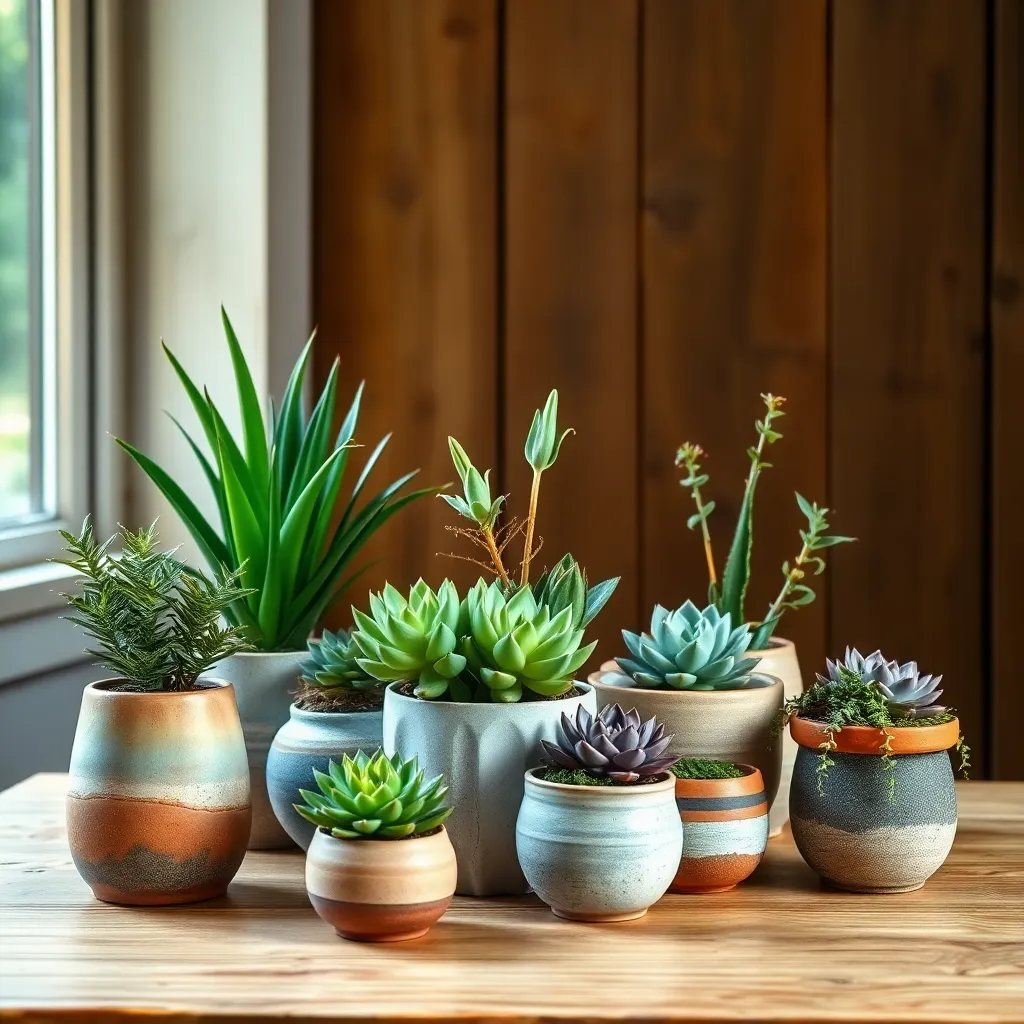
Succulent arrangements are an excellent choice for those looking to create visually stunning, yet low-maintenance garden displays. These plants thrive in well-draining soil, so it’s important to use a mix specifically designed for cacti and succulents, which typically includes sand, perlite, and peat moss.
For beginners, succulents are forgiving due to their ability to store water in their leaves, allowing them to withstand periods of neglect. To keep your arrangement looking its best, place it in a location that receives at least six hours of bright, indirect sunlight each day.
When watering, it’s crucial to let the soil completely dry out between sessions—the general rule is to water every two weeks, but this can vary depending on humidity and light conditions. Advanced gardeners might experiment with creating an indoor succulent garden by combining various colors, shapes, and heights for a striking visual effect.
Incorporating a layer of small pebbles at the bottom of your pot can further improve drainage, ensuring your plants’ roots do not sit in water. Additionally, if you notice your succulents stretching, they may be reaching for more light, so consider relocating them to a sunnier spot.
Climbing Vines (Vertical Interest and Privacy)

Climbing vines are an excellent choice for small gardens, offering vertical interest and privacy without taking up much ground space. They can transform bare walls, fences, or trellises into lush, green tapestries, creating a cozy and secluded garden nook.
When choosing climbing vines, consider plants like clematis, honeysuckle, or climbing roses, which are well-suited for vertical growth. These plants thrive in well-drained soil and require a structure to support their upward climb, so be sure to install sturdy trellises or wire supports before planting.
Watering needs for climbing vines vary, but a general rule is to keep the soil consistently moist, especially during the growing season. Applying a layer of mulch around the base can help retain moisture and regulate soil temperature, promoting healthier growth.
For beginners, clematis is a great choice due to its manageable size and stunning blooms, which come in a variety of colors. Advanced gardeners might enjoy experimenting with more vigorous varieties like wisteria, which requires regular pruning to keep it in check but rewards with spectacular floral displays.
Conclusion: Growing Success with These Plants
In exploring the ‘5 Creative Best Plants For Small Gardens,’ we’ve unearthed the parallels between cultivating a thriving garden and nurturing vibrant relationships. First, we discussed the importance of choosing the right ‘plant’ by understanding your partner’s needs and preferences. Next, we emphasized the significance of ‘soil’ — the foundation of trust and communication. Third, we highlighted the role of ‘sunlight’ — the warmth and positivity that fuels growth. Fourth, we delved into ‘watering’ — the consistent care and attention relationships require. Lastly, we touched on the art of ‘pruning’ — letting go of past grievances to foster healthy development.
As an immediate next step, take a moment to assess which ‘plant care’ aspect your relationship could benefit from today. Whether it’s enhancing communication or spending quality time, every small action contributes to a flourishing bond.
We encourage you to bookmark this article for future reference, as it serves as a gentle reminder of the simple yet profound actions that can elevate your relationship. Remember, like any garden, relationships are ever-evolving and require ongoing effort and love. By tending to your relationship consistently, you’re setting the stage for a lifetime of mutual growth and happiness.

